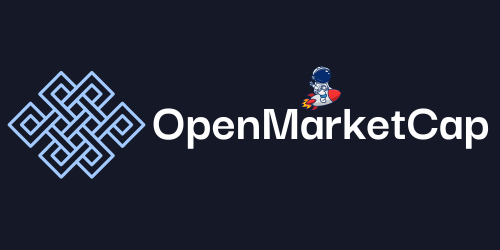Ever wondered what it’d be like to truly own that rare sword or enchanted armor in your favorite game? Imagine a world where those in-game treasures are more than just pixels—they’re assets you actually own. Blockchain technology is making this a reality, transforming the gaming landscape in ways we never thought possible.
Picture this: you’re playing an online RPG, and you find a legendary item. Instead of just using it in that one game, what if you could trade it or even sell it for real-world value? Blockchain offers gamers unprecedented control and ownership, turning virtual items into tangible assets. As we jump into this fascinating intersection of gaming and blockchain, we’ll explore how this technology is reshaping our digital adventures.
Overview of Blockchain in Gaming
Blockchain technology’s emergence in gaming is more than a technological shift; it’s a revolution that’s reshaping how we interact with our favorite virtual worlds. Remember when trading items in games felt like a risk? Blockchain erases those worries, guaranteeing secure and transparent transactions.
Market Growth and Investment
The numbers don’t lie: the blockchain gaming market’s projected to hit $435 billion by 2028, with an impressive CAGR of nearly 12.1% from 2022 to 2028. In 2022, blockchain gaming activity skyrocketed by 2000% compared to 2021. Investments pouring into this space surpassed $2.5 billion from venture capitalists and global investors, indicating massive confidence in the technology’s potential.
Benefits of Blockchain in Gaming
Secure and Transparent Transactions
Blockchain ensures every transaction in a game is secure, transparent, and immutable. Think about buying a rare sword in a game. Blockchain guarantees that transaction is real, verifiable, and unchangeable, preventing fraud and double-spends.
Enhanced Security
Enhanced security is another significant perk. Blockchain uses encryption systems to protect sensitive data and user transactions. Your game data is as safe as it gets, without the fear of hacks or breaches. It’s like having a digital vault for your prized in-game items.
Real-World Examples
Take Axie Infinity, for instance. Players collect and trade cute monsters called Axies, with some rare ones selling for thousands of dollars. This shows how blockchain can transform virtual collectibles into assets with real-world value.
Let’s look at Decentraland. It’s a virtual world where players can buy, sell, and develop land parcels, each verified through blockchain. Your virtual skyscraper in Decentraland isn’t just a bunch of pixels; it’s a tangible investment.
Personal Experiences and Future Outlook
We’ve seen firsthand how blockchain introduces a new layer of excitement in gaming. Imagine going on quests not just for fun but also for potential profit. It’s gratifying to know that our time spent in these virtual worlds can translate into real-world value.
These innovations inspire questions about the future. How will blockchain evolve in gaming? What new opportunities will arise? As we get deeper into this tech, it’s clear that blockchain’s impact on gaming is just beginning. There’s much more to explore, and we’re excited to be part of this journey.
Key Benefits of Blockchain Technology in Gaming
Blockchain technology is transforming the gaming world with several unique advantages.
Security and Transparency
Blockchain ensures secure and transparent transactions within games. Using decentralized networks, smart contracts, and encryption systems protects sensitive data and prevents fraud. This immutability and security make it hard for fraudsters to cheat, creating a more trustworthy environment for players. Imagine logging into your favorite game and knowing every item you earn or purchase is safe from hacking.
Ownership of In-Game Assets
Blockchain gaming lets players truly own in-game assets like characters, virtual real estate, and rare collectibles through non-fungible tokens (NFTs). NFTs make these assets unique and transferable, and players can trade and sell them in open marketplaces. For example, in “Axie Infinity,” gamers collect, breed, and trade digital pets. Each pet, an NFT, holds real-world value, letting players profit from their gaming investments. The rise of decentralized gaming gives us more control over our digital possessions, transforming how we view and value digital goods.
Decentralized Marketplaces
Decentralized marketplaces thrive in the blockchain gaming ecosystem. These platforms enable players to buy, sell, and trade in-game assets without intermediaries. Without relying on a single entity to manage transactions, the process becomes more transparent and fair. “Decentraland” exemplifies this by providing a virtual world owned and operated by its users. Players can purchase virtual land, build on it, and profit from their creations. Blockchain bridges the gap between gaming and real-world economics, fostering a sense of empowerment and community among players.
Blockchain in gaming is paving the way for a more secure, transparent, and ownership-centered experience, enriching how we interact with digital worlds.
Popular Blockchain-Based Games
Blockchain gaming’s rise has introduced some engaging, innovative titles we’re excited to share. These games stand out not only for their fun gameplay but also for the unique advantages blockchain offers.
CryptoKitties
CryptoKitties was one of the first games to leverage blockchain technology for in-game asset ownership. In CryptoKitties, players buy, sell, and breed virtual cats, each represented by a unique non-fungible token (NFT). The game’s appeal lies in its simplicity and the joy of collecting unique digital pets, all securely recorded on the blockchain. Early on, CryptoKitties even caused congestion on the Ethereum network due to its popularity. It’s a fascinating example of how blockchain can bring a sense of rarity and ownership to digital items.
Axie Infinity
Axie Infinity elevates blockchain gaming by combining elements of strategy, trading, and combat. Players collect, train, and battle creatures called Axies, each one backed by NFTs. The economic aspect allows players to earn cryptocurrency through gameplay, creating a play-to-earn ecosystem. Axie Infinity has seen incredible growth, with some players earning substantial income from breeding and trading Axies. The game’s success has been so impactful that it’s led to transformative financial opportunities for many in developing countries, introducing a groundbreaking way to blend gaming with real-world economics.
Decentraland
Decentraland offers a virtual reality platform powered by the Ethereum blockchain. In this game, users can purchase, develop, and monetize parcels of virtual land. Each piece of land and in-game asset is an NFT, giving users full ownership and creative freedom. Imagine building your own digital world, hosting virtual events, or even opening a business within a game. Decentraland also supports other blockchain assets, integrating with platforms like CryptoKitties. This interconnected ecosystem represents a step towards a fully immersive and decentralized internet, or Metaverse, making it a pioneering example of blockchain’s potential beyond traditional gaming.
Challenges and Limitations
Blockchain in gaming sounds like a dream, but it’s not without its hurdles.
Technical Barriers
Scalability Issues:
Blockchain networks can struggle with scaling. High transaction fees, slow processing times, and limited throughput might sound techie, but they hit close to home when we’re queued up in-game. Imagine waiting for your in-game trade to process while your team moves on without you. Multiplayer and competitive games feel this pain the most.
Solutions? We’re looking at alternative blockchain platforms that promise better scalability. Layer-2 solutions, sidechains, and state channels are some nerdy terms, but they’re designed to turbocharge our in-game transactions. Some games are already showcasing scalable blockchain solutions tailored for high performance.
Complexity:
Ever tried explaining blockchain gaming to your friend? Multiple platforms, crypto wallets, and an array of digital assets can turn into a confusing mess. It’s like teaching your grandma to use a smartphone, only a tad bit more complicated. This complexity can be a major turn-off for casual gamers who just want to immerse and play.
We can simplify this by designing more user-friendly interfaces and streamlining onboarding processes. Think one-stop-shop solutions that handle everything seamlessly.
Regulatory Concerns
Navigating the legal landscape for blockchain gaming isn’t a walk in the park. Different countries have varying regulations, and what’s legit in one might be a no-go in another. For instance, crypto assets in games might be banned in one region due to gambling laws or financial regulations but celebrated in another.
Keeping up with these regulations takes effort. Developers need to be constantly updated on legal changes and ready to pivot their strategies. International collaboration and a clearer regulatory framework could help smooth the road.
Let’s not forget, regulatory barriers aren’t all bad. They protect us from potential fraud and ensure our investments and in-game earnings are secure.
While blockchain gaming faces challenges, the potential rewards are worth the effort. If we keep innovating and adapting, the future of gaming could be pretty exciting.
Future Prospects
The future of blockchain in gaming looks incredibly bright. With market growth and mainstream adoption on the rise, we’ve got an exciting road ahead.
Market Growth
The blockchain-based gaming industry is projected to reach $435 billion by 2028. That’s a compound annual growth rate (CAGR) of nearly 12.1% from 2022 to 2028. We’re seeing more investors and developers flocking to blockchain gaming. This growth shows the confidence the ecosystem has garnered. Games like CryptoKitties and Axie Infinity have demonstrated the explosive potential of blockchain in gaming. Their success has paved the way for new projects, attracting significant investment and interest.
Mainstream Adoption
As blockchain technology gains traction, we can expect significant growth and mainstream adoption within the gaming industry. Traditional game developers are already integrating blockchain tech into their games. Platforms like Steam and Epic Games are exploring blockchain-based assets and decentralized finance (DeFi) mechanisms. These integrations bring new dynamics to gaming. Imagine owning a rare item in a game and being able to sell it directly in a decentralized marketplace. It’s a game-changer.
Overcoming Entry Barriers
One of the key challenges will be overcoming entry barriers for users and organizations. The technology can seem complex. Though, developers are already working on user-friendly interfaces. Platforms like Enjin and Flow are making it easier for users to get started with blockchain games. They offer seamless onboarding experiences, reducing friction. Efforts like these will be crucial in making blockchain gaming accessible to a broader audience. As more people get comfortable with blockchain tech, we’ll see its adoption skyrocket.
Integration with Virtual Reality
The combination of blockchain and virtual reality (VR) promises an immersive gaming experience. Blockchain ensures asset transparency and security, while VR offers an engaging environment. Imagine exploring a VR world where every item you own is secured by blockchain. This adds new layers of value to digital assets. Players can trade items with confidence knowing they own authentic, verifiable assets. Projects like Decentraland are leading the way in this integration, creating virtual worlds where blockchain and VR intersect. We’ll likely see more of these innovative projects as technology continues to evolve.
Development of New Game Economies
Blockchain is not just changing how games look and feel; it’s also revolutionizing game economies. Traditional gaming often locks players into closed economies with limited real-world value. Blockchain games, on the other hand, introduce decentralized economies where players have real ownership of in-game assets. This fosters new opportunities for trade and profit. Players can earn cryptocurrency by participating in the game, creating a play-to-earn model. Imagine earning an income by simply playing your favorite game. Axie Infinity has already demonstrated this potential, with some players making substantial earnings. The future of game economies looks decentralized, transparent, and player-centric.
Conclusion
Blockchain’s transforming the gaming world in ways we couldn’t have imagined a few years ago. With real ownership of in-game assets and the potential for profit through play-to-earn models, gamers are more empowered than ever. As mainstream adoption grows and developers integrate blockchain tech, the future looks incredibly bright.
Challenges like scalability and regulatory concerns still exist, but solutions are on the horizon. Platforms like Enjin and Flow are making it easier for everyone to get on board, and the combination of blockchain with virtual reality promises even more immersive experiences.
We’re excited to see how blockchain continues to revolutionize gaming, creating new opportunities for players and developers alike. The journey’s just beginning, and we can’t wait to see where it takes us.

